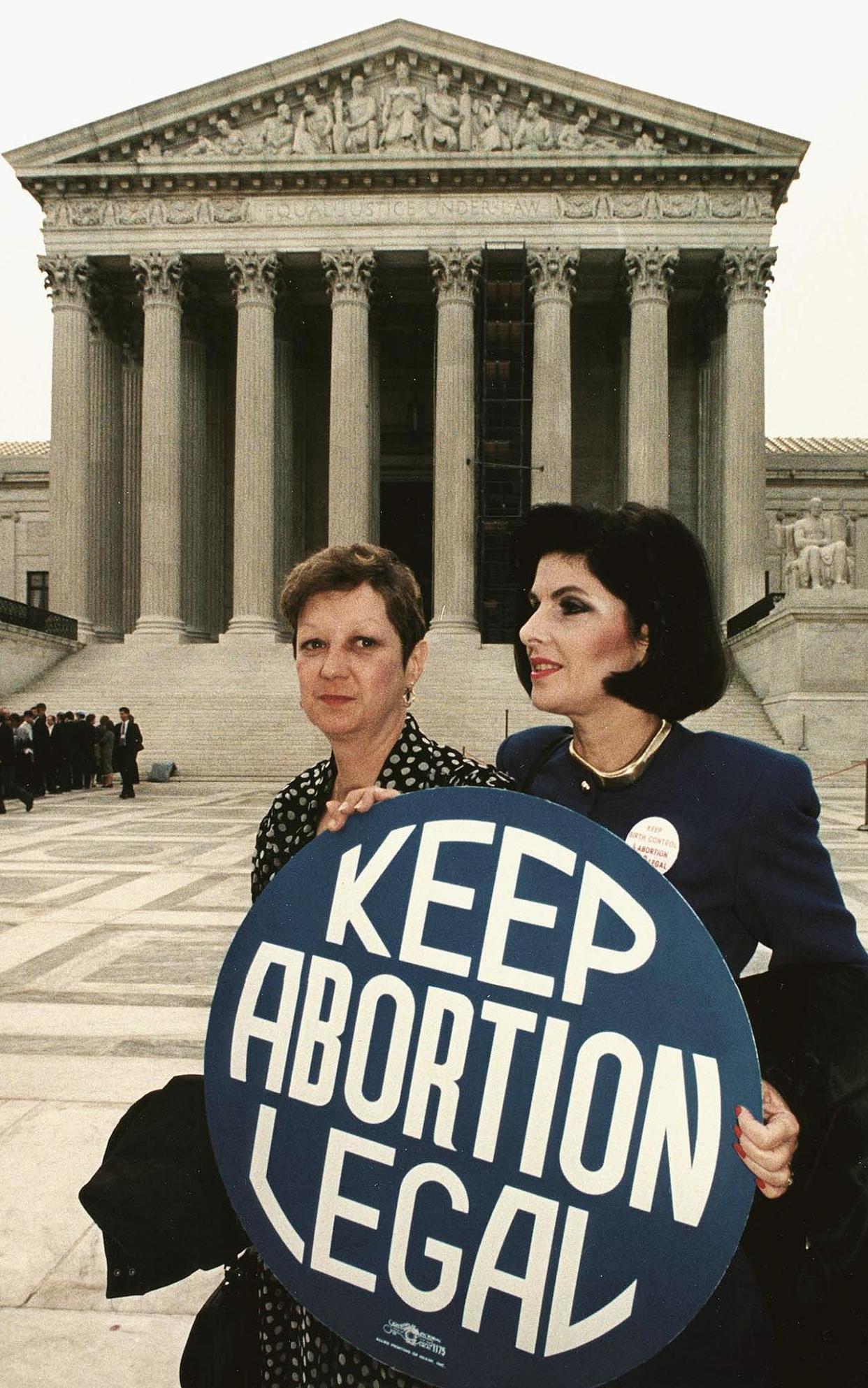What is Roe vs Wade and why is it threatened by abortion case before Supreme Court?

This April 26, 1989 file photo shows Norma McCorvey (L), known as
(AFP)" />
The landmark ruling for US abortion rights, Roe v Wade, is back in the spotlight after the Supreme Court announced it would hear a case involving a Mississippi law banning most abortions after 15 weeks, potentially igniting a major challenge.
It marks the first major abortion rights challenge in front of the three newest justices, all conservatives appointed by Donald Trump.
The 1973 ruling is considered the first successful litmus test that enshrined a pregnant woman’s right to have an abortion in the US, legalising the procedure across the country and setting a global precedent.
The ruling repealed many federal and state abortion laws that restricted access for women or banned the procedure outright and sparked decades of religious and moral conflict, fought over women’s bodies.
The case revolved around Norma McCorvey — known for the purposes of the proceedings as “Jane Roe” — who became pregnant with her third child in Texas in 1969 and wanted to have an abortion, but was unable to access one due to it being banned in her state in all cases but to “save a woman’s life.”
She was taken on by lawyers Sarah Weddington and Linda Coffee, who filed a lawsuit on her behalf in US federal court against her local district attorney, Henry Wade, alleging that Texas’s abortion laws were unconstitutional.
The US District Court for the Northern District of Texas ruled in her favour, which was kicked up to the Supreme Court after Texas appealed.
The Supreme Court’s 7-2 decision in Ms McCorvey’s favour was based partly on the Constitutional “right to privacy”, which the judges found covered a woman’s right to access abortion.
Ms McCorvey, who was unable to access a legal abortion, gave birth before the case was heard and the baby was put up for adoption.
She said at the time that she did it “on behalf of herself and all other women” in the same situation.
The decision also set a legal precedent that affected more than 30 subsequent Supreme Court cases involving restrictions on access to abortion.
Many on the right are committed to overturning Roe v Wade. The most recent addition to the Supreme Court, Amy Coney Barrett, brought the conservative balance to six against three. Mr Trump appointed two other conservative judges – Neil Gorsuch and Brett Kavanaugh.
Read More
The Independent visits Heathrow ahead of international travel restarting
Israel thanks US for blocking UN statement calling for immediate ceasefire in Gaza

